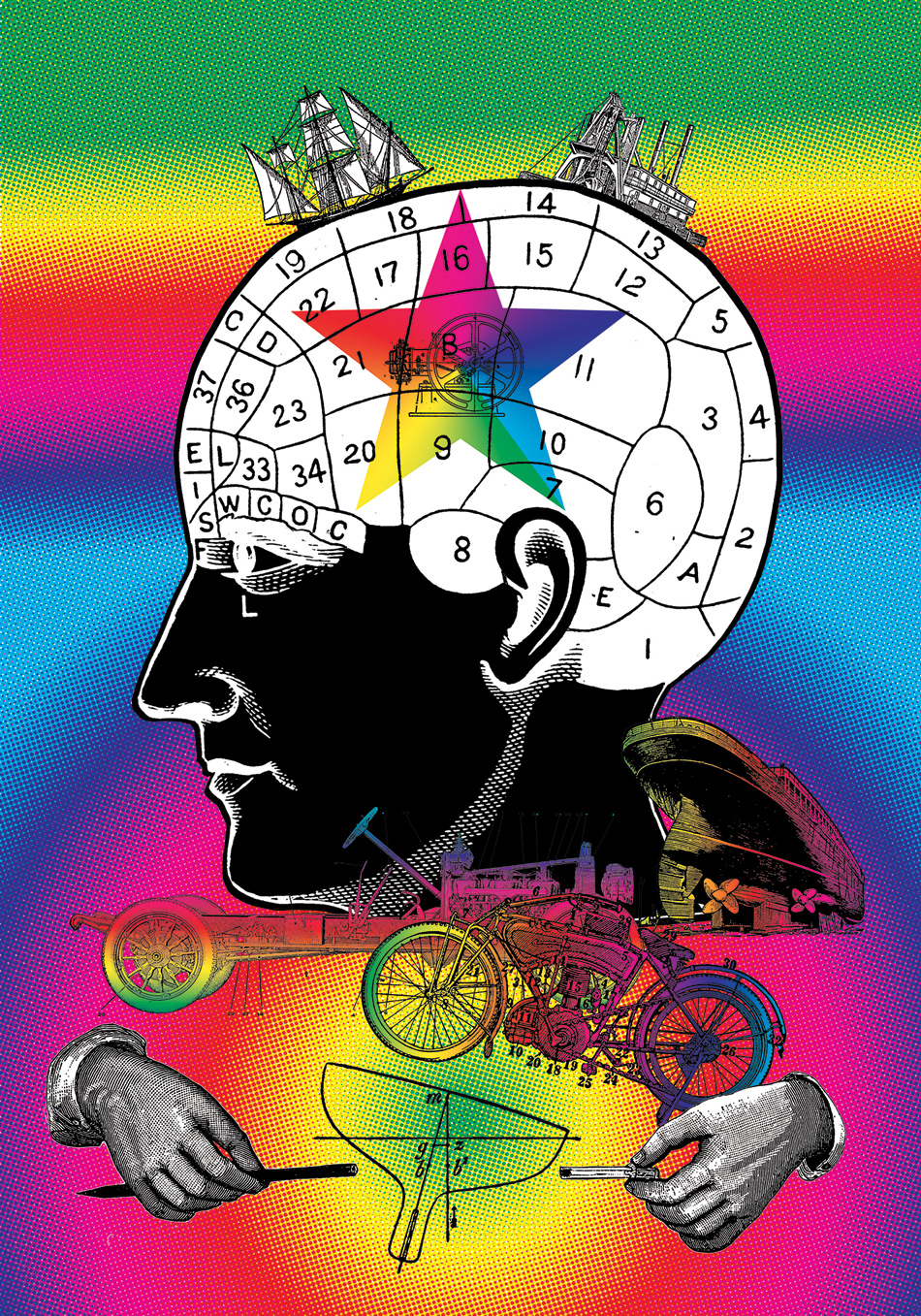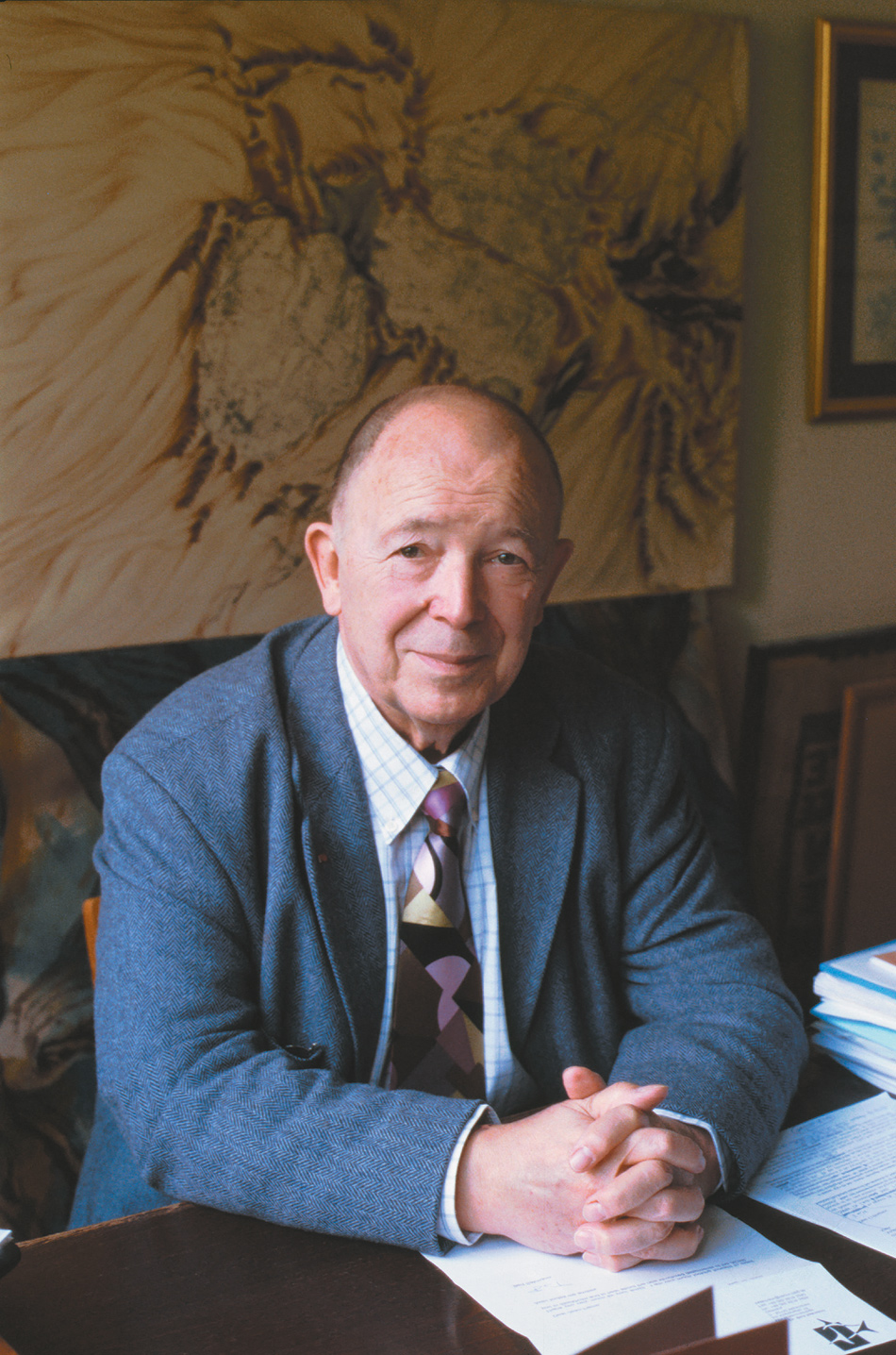The mind being an elusive thing, people are apt to be captivated by borrowed models of what it is and how it works. At one time the mind was likened to a theater, later to a hydraulic system (Freud), then to a collection of behavioral reflexes, more recently to a computer. Currently, there is a vogue to model the mind on the brain—the brain as a connected network of nerve fibers, operating by electricity and chemistry. The mind may not look very neuronal—this is not evident to introspection—but we are assured that there is really nothing more to it than neurons firing in the void. The atoms of the soul are microscopic cells, spiking with electricity. And there is evidently something to be said for this point of view, since the brain is undeniably what underlies the activities of mind: it constitutes the machinery, the hardware, the biological substrate. Nothing happens in the mind that is not prefigured in the brain. Everything you think and feel has its neuronal precursor or progenitor; and since neurons are made of molecules, the mind is fundamentally a molecular machine—it consists of molecules in action. So it is very tempting to suppose.
The book under review takes this perspective and runs with it. Jean-Pierre Changeux, the celebrated French neuroscientist and author of Neuronal Man, offers to recast Plato’s old trinity of the Good, the True, and the Beautiful in the language of contemporary brain science. He sees himself as updating antiquated philosophy with thoroughly modern brain chemistry. He writes:
So, we shall take a neurobiological approach to our discussion of three of the universal questions of the natural world, as defined by Plato (428–348 BCE), and by Socrates (469–399 BCE) through him, in his Dialogues. He saw the Good, the True, and the Beautiful as independent, celestial essences or Ideas, but so intertwined as to be inseparable…. This leads us to a top-down approach, contrary to Plato’s, which we shall maintain throughout the book to place the Good, the True, and the Beautiful within the characteristic features of the human brain’s neuronal organization.
Accordingly, chapter 1 of the book, subtitled “Neuroesthetics,” discusses such topics as the perception of color, the physiology of hearing music, synesthesia, neural correlates of consonance and dissonance, and the physiology of art collectors. Changeux announces his conception of art in these words: “I shall define art as symbolic intersubjective communication with multiple, variable emotional contents in which empathy appears as an essential feature of intersubjective dialogue.” Notice that this definition contains no specifically aesthetic concepts—such as beauty or creativity or interest. As a definition, it is clearly inadequate, since it would make most discussions of moral or political issues a form of art: emotion and empathy are obviously involved in such “dialogue,” but they are not ipso facto art. Indeed, scientific discussions can also involve emotion and empathy. But it does enable Changeux to maintain that in discussing the physiology of emotion he is discussing the nature of art. Thus we are invited to agree that traditional philosophical discussions of art can be replaced by brain science. Art, for Changeux, comes down to what your brain does when you see, hear, and experience emotion—cellular commotions, basically.
What should we make of this contention? The short answer is that it contains two well-known fallacies and a sliver of truth. The first fallacy is often called by philosophers “the act-object fallacy”: confusing the subject matter of a mental state, such as a belief, with the mental state itself, thus mistakenly adopting a psychologistic view of the subject matter.1 Suppose an overeager brain scientist were to announce the new field of “neuromathematics,” in which old-fashioned mathematics was to be replaced by studies of the brains of mathematicians. Instead of talking about numbers and geometrical forms, we are to talk only of neurons—this being the scientific way to do mathematics.
Our enthusiastic brain scientist has clearly confused two distinct things: the subject matter of mathematical thought—numbers and geometric forms—and the mental acts whereby mathematicians grasp that subject matter. To be sure, when mathematicians think, their brains whir and buzz, but that does not entail that what they think about is their own brain.
Similarly, when you look at a painting or read a poem your brain no doubt undergoes electrochemical activity; but the painting or poem is not in your brain (recall Changeux’s talk of placing the Beautiful “within the characteristic features of the human brain’s neuronal organization”). Nor is its aesthetic value, unless we simply assume without argument that the aesthetic value of an artwork reduces to human psychological and physiological responses to art. The artwork is the object of the mental act of apprehending it; it is not the mental act in which it is apprehended. So we cannot claim to study beauty-in-objects by studying the human psychological response to beauty.2
Advertisement
The second fallacy is usually called “reductionism.” Suppose Changeux agrees that he is not really discussing beauty itself, as an attribute of artworks, but rather our perception of beauty—the act, not the object. So he is discussing an expressly psychological subject—aesthetic experience. Now he tells us about the neuronal correlates of such experience, which there must surely be (this is the sliver of truth I referred to earlier). Does it follow that he is discussing aesthetic experience? Not unless aesthetic experience reduces to its neural correlates. For that to be so the mind must in general reduce without residue or remainder to the brain; then he can claim to replace mind talk with brain talk. Certainly, such a view has been maintained—it is the view usually labeled “materialism”—but Changeux needs to persuade us that this philosophical position is correct, which he signally fails to do. He seems to think that if he can identify brain correlates for a mental state, he has thereby shown that there is nothing to the mind beyond the brain.
But this is a logical error, since even a Cartesian dualist believes in brain correlates for all mental phenomena—he just denies that these are mental phenomena. In order to rule dualism out and establish materialism, Changeux will have to engage in some philosophical argumentation—reciting empirical findings about the brain gets us nowhere. So the science has not replaced the philosophy; on the contrary, Changeux can only hope to establish his materialist metaphysics by going beyond the science. What he doesn’t seem to realize is that he holds a philosophical position, which is not entailed by any known science.
Matters only get worse in chapter 2, subtitled “Neuroscience and Ethical Normativity,” in which both fallacies are again vividly on display. The chapter begins inauspiciously with the following pronouncement: “My idea is to break with traditional philosophical reductionism, which consists of introducing categories that are as artificial as impermeable and which surrounds the debate with semantic and conceptual traps.” This is a bizarre statement. He is referring here to the traditional distinction between fact and value—the “is-ought” distinction. This distinction is brought in to mark the difference between two sorts of question: what is actually the case (facts) and what ought to be the case (values). Much can be said about the is-ought distinction, but to call it a case of “philosophical reductionism” is preposterous: it is claiming precisely that questions of value do not reduce to questions of fact. By contrast, Changeux is suggesting, in effect, that questions of ethics do reduce to questions of fact—facts about the brain, in his view.
Again, the act-object fallacy lurks in his section headings: “Ethical Normativity: Origins of Moral Necessity,” “The Natural Foundations of Ethics.” Here he fails completely to distinguish the subject matter of ethical thought from ethical thought itself. The question of what is right or good is not the same as the question of what people think is right or good: the former is a question of ethics properly so called, but the latter is a question of moral psychology. When we are discussing whether slavery is right or wrong, say, we are not discussing what anyone thinks—we are discussing an ethical, not a psychological question. So when Changeux speaks of the “evolution of value” he speaks ambiguously: Does he mean that ethical value itself evolves or does he mean that our thinking about it does? A moral realist or objectivist will insist that slavery was always wrong, no matter what people happened to think at the time; so morality itself does not evolve, just our grasp of it.
Again, there is much to be said philosophically about the nature of moral value and its relation to the human apprehension of moral value; my point is that Changeux simply assumes, without discussion, that there is nothing more to ethical value than human ethical psychology. He thus mistakenly concludes that by investigating the neuronal basis of ethical thought he is somehow replacing questions of ethics by questions of neuroscience. But once we make a firm distinction between act and object, we see that he has nothing to say about the Good in itself, but only our psychological relationship to the Good. Plato has not been superseded at all.3
At most, then, Changeux has something to tell us about moral emotions or thoughts or attitudes, not moral categories as such (the right, the good, the permissible, the obligatory, etc.). And indeed he covers some familiar ground in this area: the evolution of altruism, kin selection and group selection, the social contract, the growth of human cooperation. What is striking, however, is that he has very little to say about the brain in relation to human morality. Presumably this is because there is little to say, at this stage of knowledge, about brain mechanisms and moral thought. This would not surprise a Kantian or a utilitarian, since these conceptions of ethical understanding locate it in general properties of reason—along with a good deal of human thinking, including science and common sense. At any rate, the earlier promise to locate the Good within specific tracts of brain tissue goes unfulfilled, except as the entirely platitudinous proposition that all mental activity has a neuronal basis of some sort or another (the sliver of truth again).
Advertisement
The chapter called “Truth” is not about truth at all. It is about the neural underpinnings of consciousness, sleep, speech, and writing. Obviously there are many more types of truth about the world than are covered in these questions about the human mind. When a philosopher, such as Plato, announces an interest in the nature of truth, we expect to be treated to a discussion of the various theories of truth that have been proposed: the correspondence theory, the coherence theory, the pragmatic theory. We might also expect a discussion of whether truth is humanly attainable—whether skepticism can be refuted. Since Changeux discusses none of this, it can hardly be that he is replacing, or improving upon, traditional discussions of truth; he is simply changing the subject, while making it sound as if neuroscience can displace philosophical questions.
His exposition of the actual topics of the chapter provides a decent enough survey of the literature, though no new insights are offered, but he does make one statement that stands out for its questionable character:
Evolutionist theories, which are also those of modern neurobiologists, agree on the fact that consciousness emerges at the highest and most complex organizational level of the central nervous system.
This implies that consciousness is the preserve of only the most advanced animals and that it exists in humans only by virtue of the most recently evolved parts of the brain (mainly the frontal cortex). But on one good understanding of the word “consciousness” a great many animals can be said to be conscious, and in virtue of relatively primitive brain structures. Thus many species can be said to see and hear and smell, and these types of awareness are indicators of consciousness. There is certainly no agreement among students of mind and brain that consciousness only arises from the most complex brain structures (though perhaps self-consciousness does).
Having, as he thinks, exhausted the Good, the True, and the Beautiful, Changeux ends his book with two chapters on molecules in the brain. These make no grand philosophical claims and consist largely of quite technical discussions consisting of such sentences as this:
In addition to considerable improvement in resolution over time, electrophysiology provided essential information on the nature of the short circuit…provoked by acetylcholine, which, at the vertebrate end-plate, causes selective increase of cation conductance for sodium, potassium, and calcium through what was called an ion channel.
This is solid enough science, no doubt, but not likely to excite the general reader interested in the broader significance of neuroscience. I can report, however, that Changeux, a highly distinguished scientist, does provide some nice potted histories of scientific and other subjects—such as the development of physiology, genetics, the history of writing, early Greek thought, and human evolution, showing considerable erudition, so the general reader can certainly benefit from reading the book. It is the broader message that falls flat, mainly because the author underestimates the tradition he is trying so zealously to discard. I might say the book suffers from “neuromania,” which no doubt has its own neuronal basis.
This Issue
July 11, 2013
A Pianist’s A–V
Hard on Obama
The Unbearable
-
1
Psychologism was originally the philosophical view that logic is about the laws of thought, so that logic is really a branch of psychology. Gottlob Frege is famous for opposing this view, holding that logic is really about objective nonpsychological universal normative laws. ↩
-
2
Of course, it is possible to maintain that aesthetic properties, such as beauty, are really just projections from our subjective reactions to objects (“beauty is in the eye of the beholder”). But this is a philosophical thesis that needs to be acknowledged and defended; and I have no idea from his text whether Changeux holds to this kind of aesthetic subjectivism (I certainly don’t). ↩
-
3
Again, someone might explicitly defend the idea that moral facts are really projections of our moral psychology, as with various brands of moral subjectivism and relativism. But this needs to be argued, not assumed; and I think it is highly implausible (as do many others). ↩




